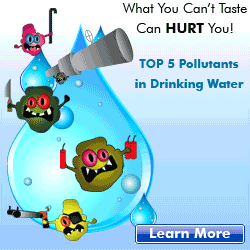Water Contamination
The alkalinity of water is a measure of how much acid it can neutralize. If any changes are made to the water that could raise or lower the pH value, alkalinity acts as a buffer, protecting the water and its life forms from sudden shifts in pH. This ability to neutralize acid, or H+ ions, is particularly important in regions affected by acid rain.
Most alkalinity in surface water comes from calcium carbonate, CaCO3, being leached from rocks and soil. This process is enhanced if the rocks and soil have been broken up for any reason, such as mining or urban development. Limestone contains especially high levels of calcium carbonate. Alkalinity is significant in the treatment of wastewater and drinking water because it will influence treatment processes such as anaerobic digestion. Water may also be unsuitable for use in irrigation if the alkalinity level in the water is higher than the natural level of alkalinity in the soil.

Alkalinity is also closely related to the acid neutralizing capacity (ANC) of a solution and ANC is often incorrectly used to refer to alkalinity. However, the acid neutralizing capacity refers to the combination of the solution and solids present (e.g., suspended matter, or aquifer solids), and the contribution of solids can dominate the ANC (see carbonate minerals below). The alkalinity is equal to the stoichiometric sum of the bases in solution.
In the natural environment carbonate alkalinity tends to make up most of the total alkalinity due to the common occurrence and dissolution of carbonate rocks and presence of carbon dioxide in the atmosphere. Other common natural components that can contribute to alkalinity include borate, hydroxide, phosphate, silicate, nitrate, dissolved ammonia, the conjugate bases of some organic acids and sulfide. Solutions produced in a laboratory may contain a virtually limitless number of bases that contribute to alkalinity. Alkalinity is usually given in the unit mEq/L (milliequivalent per liter). Commercially, as in the pool industry, alkalinity might also be given in the unit ppm or parts per million.
Read Next: Alkalinity of Drinking Water Explained




